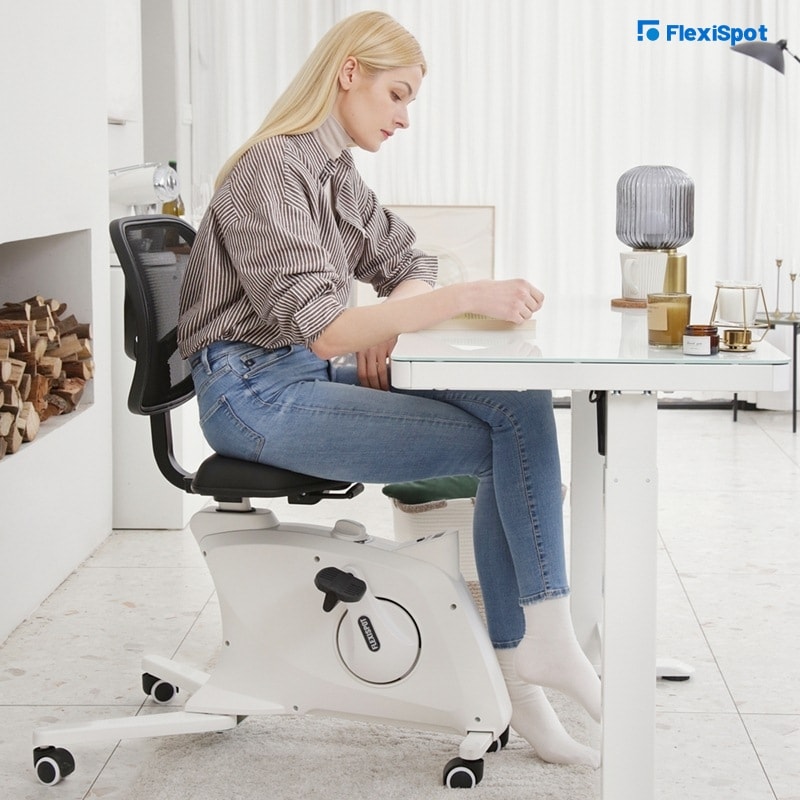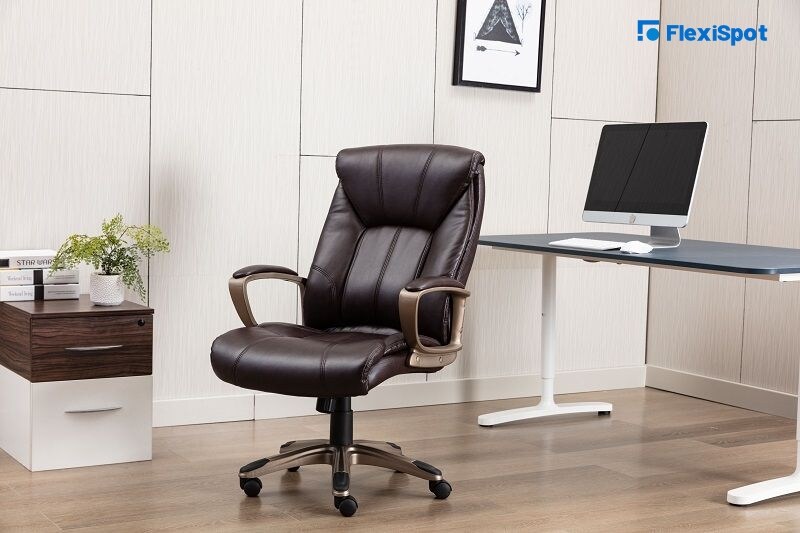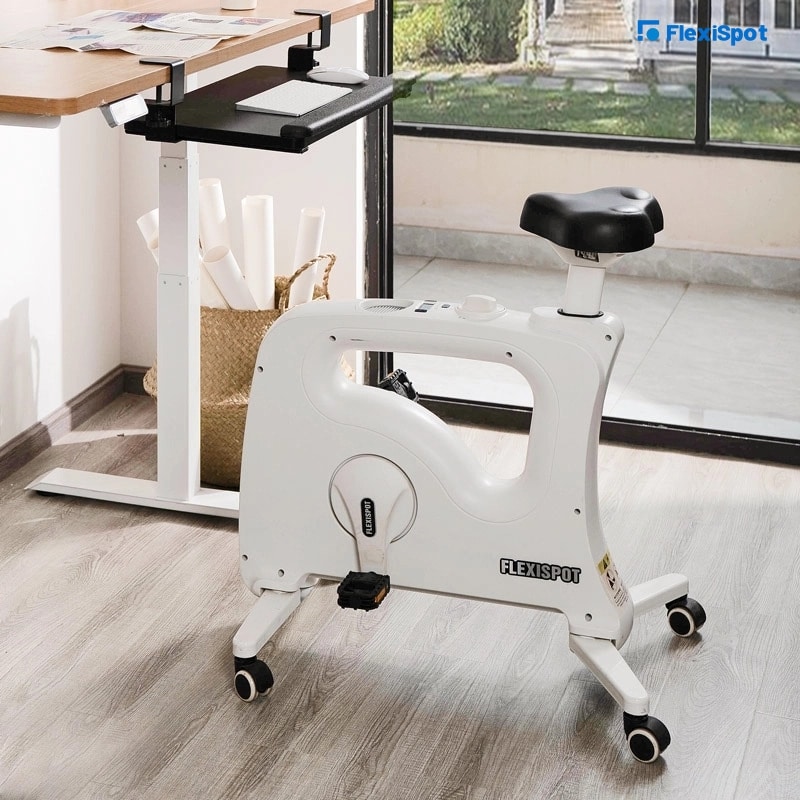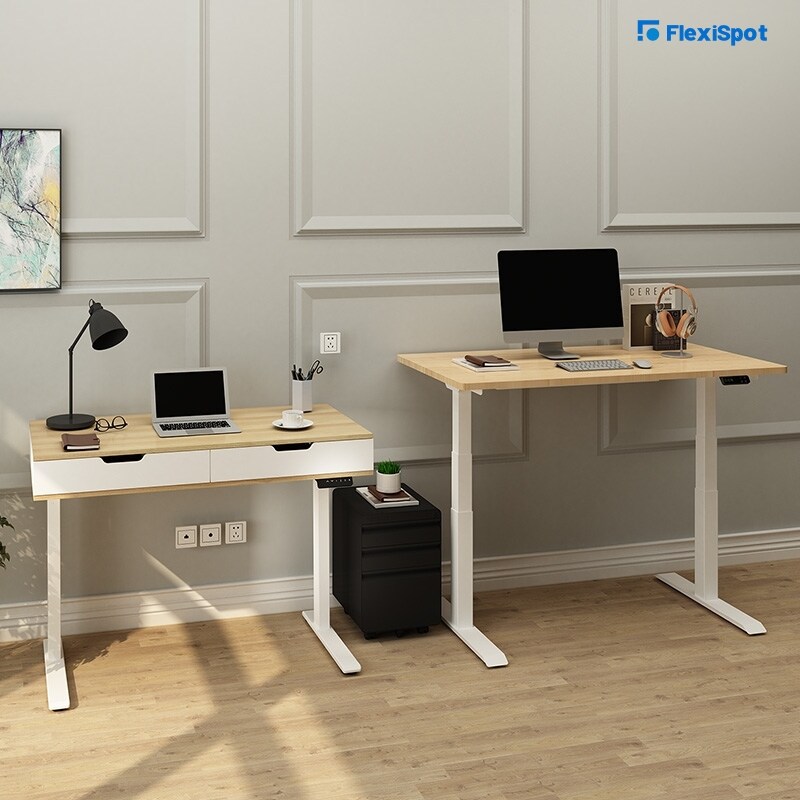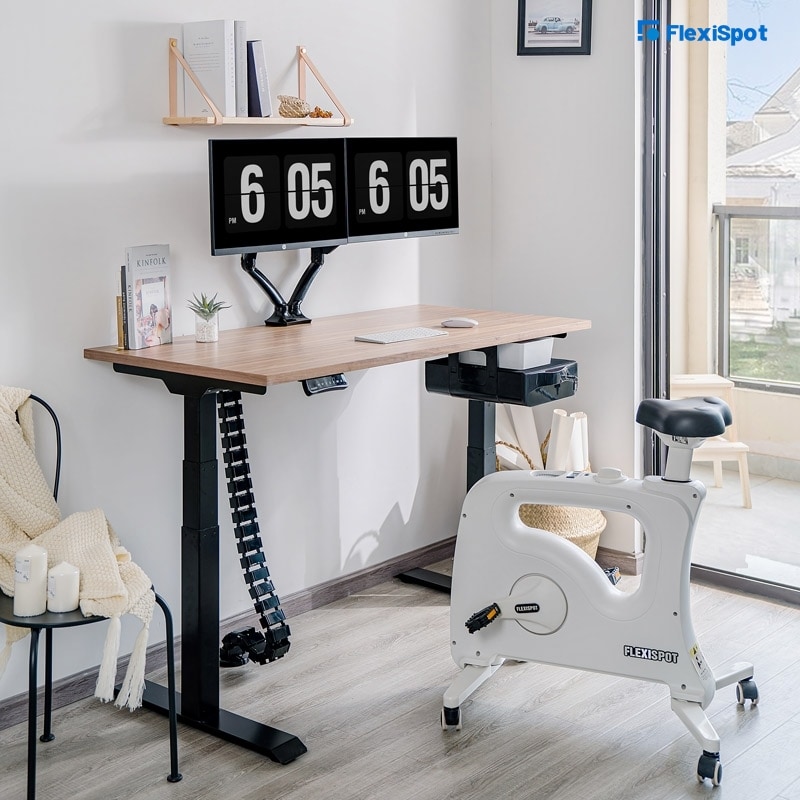Spending eight hours a day in a rocky seat with your eyes glued to the screen can be detrimental to your physical and mental health. Recent research shows that the average employee will have sore eyes, a hunched back, and protruding stomach within the next twenty years.
This goes to show that an uncomfortable office working environment is the root of many issues that take a toll on an employee’s wellbeing, which further impacts their performance and productivity.
Fortunately, a growing number of employers and employees have begun acknowledging and realizing the physical and psychological ramifications that the ‘sitting’ work culture has. This has led them to take certain steps and revamp the workplace to avoid a sedentary, uncomfortable, and impractical working environment.
How to Design an Active Workplace
Ergonomics has been recognized as the key to creating an active workplace where employees can work comfortably, resulting in increased efficiency and productivity. From selecting more practical furniture solutions to pushing employees to be more active, there are many ways to design an active workplace and create a productive environment.
Invest in Good Ergonomic Task Chairs
In most cases, back and neck problems stem from a task chair’s lack of support. If you have to stay seated in a single place for a few hours, it’s important that the place be comfortable and supportive. Therefore, an ergonomic task chair is an essential element of an active workplace environment.
If you’re looking for an ergonomic chair that offers optimum comfort, here are a few features to look out for:
Comfortable Material
When purchasing the perfect ergonomic task chair, searching for a light and soft material is a good place to start. A chair made of abrasive material will make it a challenging job – sitting all day – even more difficult. Besides the softness of the material, consider its breathability to prevent a highly-dreaded sweaty back.
Backrest Tilt and Recline
While keeping your posture upright is important, it can be daunting to keep your back straight all day, not to mention the pressure it puts. According to research, sitting in a reclined seat considerably reduces the pressure on your back and prevents the frequent backaches that you may otherwise experience. An office seat featuring a synchronous tilt function is even better as its mechanism lets you keep your feet firmly on the ground and allows you to gaze straight ahead.
Adjustable Arm Rests
Almost every job includes some typing, making it imperative for a task chair to have ample arm support. So, if you’re looking for a good ergonomic chair, look for one with a height-adjustable armrest that can be turned inwards. This feature will support your forearms, encourage good posture, and prevent any problems that may occur as a result of constant typing.
Adjustable Height
If your work desk isn’t height-adjustable, you need to ensure that your chair is. Also, it wouldn’t hurt to have both a height-adjustable desk and chair. Either way, a height-adjustable task chair will allow you to set the height to your liking, ensuring that your feet are flat on the floor.
Considering the extensive options you have when purchasing an office chair, the above ergonomic office chair checklist can be quite helpful in narrowing down your choices and finding one that best suits you and your workspace.
Incorporate Active Seating
Sitting down for prolonged periods can have a long-term impact on your health. According to research, being sedentary for long hours can negatively impact your breathing, blood circulation, posture, and mental health.
Although the evident solution is to be in motion more often, it isn’t possible for everyone due to the difference in jobs. So, the better option is to bring in active seating in the workplace.
Thanks to the revolution of office furniture, various active seating options are available to keep your body moving by mimicking the same posture shifts that occur when walking or standing.
A few types of active seating options you can seek for a more active workplace include:
Under Desk Bikes
An under desk bike is an office-friendly fitness machine that you can slide under your desk and pedal while you work. Although they aren’t as intense as their full-sized and completely functional counterparts, they are a great way to squeeze in a little exercise to keep you active at your otherwise sedentary job. The Under Desk Bike V9U can help you lose weight, improve health, lower stress, and enhance overall productivity.
Kneeling Chairs
This type of active seating consists of two pads: one to sit on and the other to rest your lower knees. Kneeling on the chair opens up your pelvis and helps your spine adopt the correct alignment, strengthening your back and core muscles, improving blood circulation, and making you feel more alert and active.
Self-Balancing Chairs
A self-balancing chair is basically a backless chair that helps an individual incorporate more movement in their routine than a standard chair. Sitting on it strengthens your core, improves postures, and releases tension from your neck, back, and shoulders.
Balance Ball Chairs
A balance ball chair is what you get when you combine a task chair and an exercise ball. This type of seating helps you chair positions frequently, aligns your spine, improves posture, and strengthens your core.
As great as active seating is for your overall wellbeing, it is still somewhat uncommon and maybe even unorthodox in most workplaces. Therefore, the best way to incorporate it into your daily life is to alternate it with regular ergonomic task chairs. That way, you will be able to experience the exclusive benefits of various office furniture solutions.
Introduce Height Adjustable and Standing Desks
Having a good desk is as important as having comfortable seating, and like office chairs, there are a ton of desks to choose from.
Height Adjustable Desks
When it comes to ergonomics, the most critical feature to consider in a desk is height. A desk that’s too high can strain your forearms when typing, while a desk that’s too low will cause hunching, straining your shoulders and back. Hence, it’s important to seek a height-adjustable desk to pair with your ergonomic or active seating.
Standing Desks
As the name suggests, a standing desk is a desk that lets you stand while working. Investing in a height-adjustable standing desk can help keep you on your toes, reducing the chances of weight gain, back pain, and a myriad of other health concerns. Standing desks also lower the risk of heart disease, reduce stress, improve posture, and increase productivity.
While these desks have certain cons, such as causing aches and pains due to being on your feet all day long, you can overcome them by pairing your standing desk with accessories, such as anti-fatigue mats, footrests, desk mats, etc.
Create Activity Areas
For a truly active workplace, it’s essential that you find ways to motivate and encourage your employees to move around. If your office has ample space, a great way to do this would be to create dedicated areas for activities.
Here are a few activity areas for inspiration:
Game rooms
Yoga rooms
Indoor gyms
Improve Other Environmental Elements
You might think that introducing new task chairs and standing desks is enough to improve the ergonomics of the workplace. While they do play a significant role in creating a more active workplace, you need to be mindful of other environmental elements, including light, air, and temperature.
Here are some environmental improvements to bring about in your workplace to make it more active.
Allow Natural Light In
Natural light can bring about considerable improvement in employees’ health and wellbeing, according to a recent study. This is why many office buildings are made of glass. If you really want to improve energy levels and productivity in the office, increase the natural light exposure. A good way to do that is to replace brick walls with glass partitions and introduce more windows. Moreover, if you don’t have an option to introduce natural light, amp up the artificial lighting of the space.
Improve Air Quality
According to research, workers perform better in environments with clean air. More importantly, given the lurking threat of COVID-19, it is more vital than ever to introduce air purifiers and clean the ventilation system regularly.
Introduce Temperature Control
The temperature of the workplace also plays a major role in employee comfort. Installing an effectively functioning air-conditioning unit and providing employees with its control will make them happier.
Improving these small but meaningful environmental factor will help create a healthier working environment, which will boost employee satisfaction and productivity.
Additional Accessories
Introducing certain accessories to the workplace along with ergonomic furniture solutions can really help make a workplace comfortable, efficient, and as an effect, productive. Lumbar pillows for the lower back, footrests for foot support, and ergonomic keyboards and mouse are just a few of the many accessories that can create a more active workplace.
Wrapping Up
Designing an active workplace has become easier than ever, given the extensive ergonomic office furniture solutions available. Implement and incorporate the above-listed things in your workplace to improve employee comfort and ease, which will, in turn, improve efficiency and productivity.
Visit FlexiSpot today for hundreds of ergonomic products for a more active workplace.
